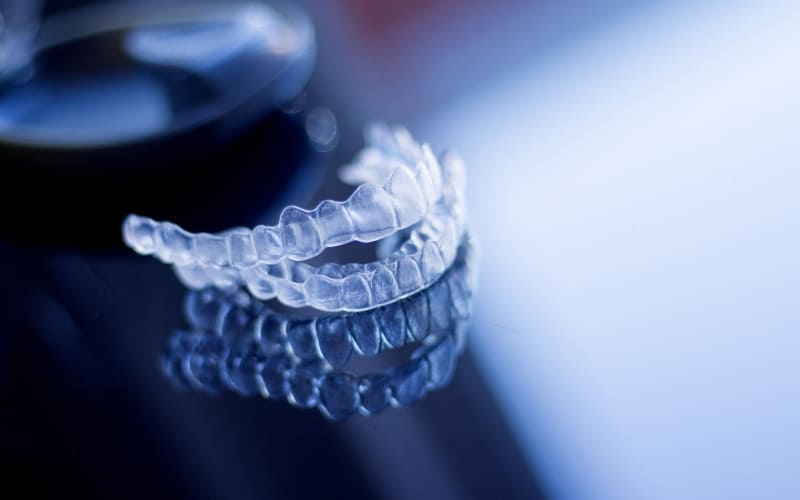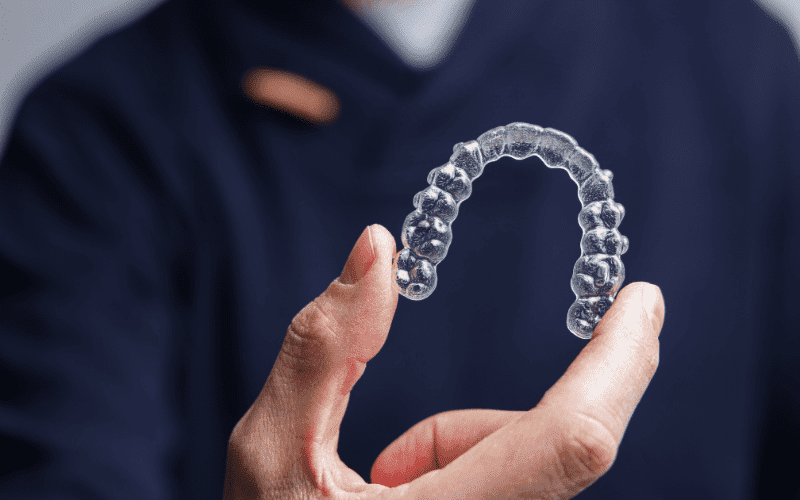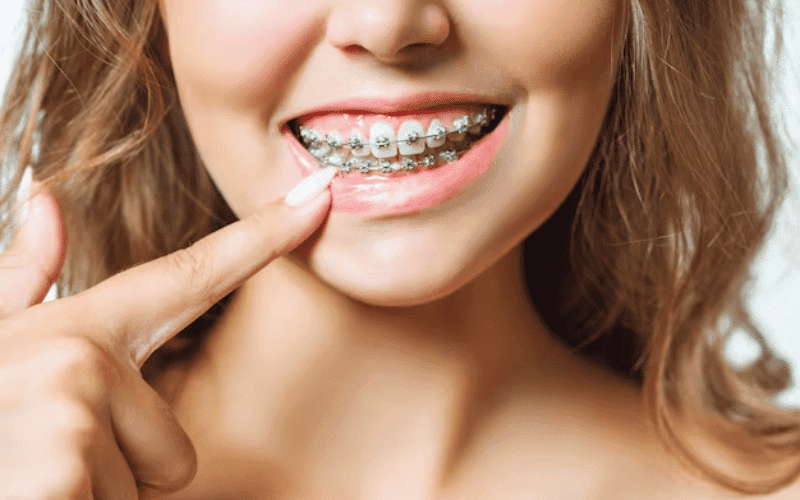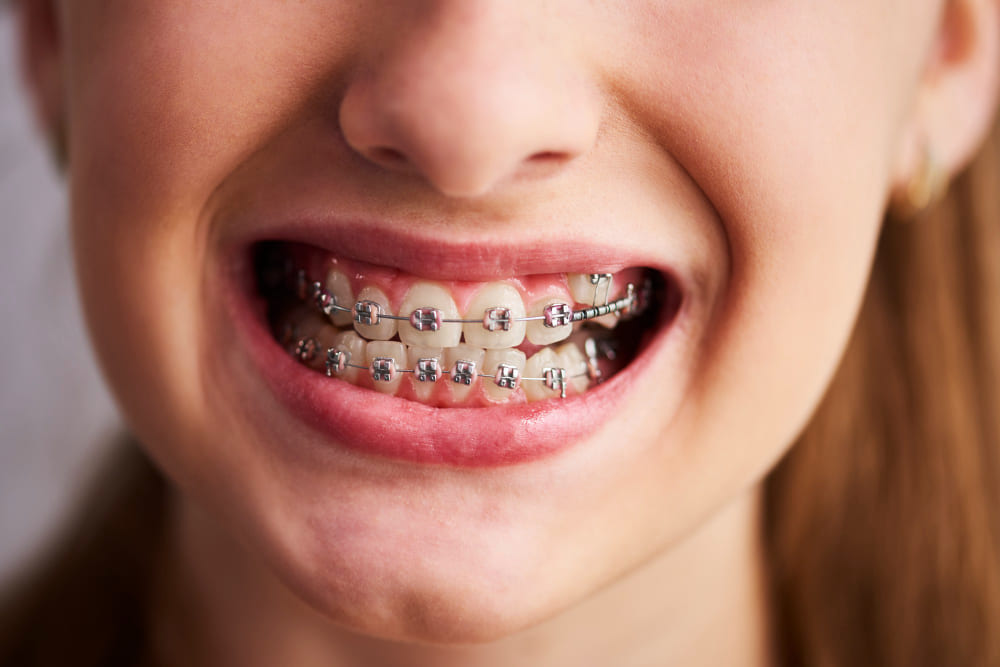Call: (810) 674-3060
Are Clear Aligners Better Than Braces?

Achieving a straighter smile is a common desire for many individuals seeking to enhance their dental aesthetics and overall confidence. Two primary treatment options, braces, and clear aligners, stand out in the realm of orthodontic care. Braces, consisting of metal or ceramic brackets bonded to teeth connected by wires, have long been a traditional choice for teeth straightening. On the other hand, clear aligners transparent trays custom-fit to shift teeth into alignment offer a more discreet alternative gradually. This blog aims to delve into the advantages and drawbacks of both braces and clear aligners, empowering readers to make an informed decision about which option may suit their needs best. Ultimately, it will explore whether “Clear Aligners Better Than Braces” holds for various dental scenarios.
Clear Aligners
A. Benefits
1. Appearance: Clear aligners are nearly invisible, allowing users to straighten their teeth discreetly without drawing attention to their orthodontic treatment.
2. Diet: Unlike traditional braces, clear aligners do not require dietary restrictions. Users can remove them while eating, allowing for unrestricted enjoyment of favorite foods without concerns about damaging orthodontic appliances.
3. Comfort: Clear aligners are generally more comfortable to wear than braces. They are custom-made to fit snugly over the teeth, minimizing irritation and discomfort often associated with metal brackets and wires.
4. Hygiene: Maintaining oral hygiene is more accessible with clear aligners than braces. Since they are removable, users can brush and floss their teeth generally without navigating around orthodontic hardware. This reduces the risk of plaque buildup, tooth decay, and gum disease.
5. Fewer appointments: Clear aligner treatment typically requires fewer in-person appointments than braces. While monitoring progress is still necessary, the intervals between appointments may be longer, offering greater convenience for individuals with busy schedules.
B. Drawbacks
1. Not suitable for all cases: Clear aligners may not be ideal for treating complex misalignments or severe orthodontic issues. Cases requiring significant tooth rotation or vertical movement may be better addressed with traditional braces or other orthodontic treatments.
2. Requires discipline: Successful precise aligner treatment relies on consistent wear as the orthodontist prescribes. Patients must commit to wearing their aligners for the recommended 20-22 hours per day to achieve desired results within the expected timeframe. Failure to comply with wearing instructions can prolong treatment duration and compromise outcomes.
3. Risk of loss or misplacement: Since clear aligners are removable, there is a risk of misplacing or losing them, particularly during meals or when removed for cleaning. Misplacing aligners can disrupt the treatment progress and may incur additional costs for replacements. Additionally, pets may mistake aligners for chew toys, leading to accidental damage or loss.
Traditional Braces
Benefits
1. Effective for most orthodontic issues: Unlike clear aligners, traditional braces are suitable for addressing many orthodontic problems, including complex misalignments, severe crowding, and bite issues. Their versatility makes them an effective solution for various dental concerns.
2. Less reliant on patient compliance: Unlike clear aligners, which require strict adherence to wearing instructions, traditional braces are fixed onto the teeth and are not removable by the patient. This reduces the risk of treatment interruptions due to non-compliance and ensures continuous progress toward straighter teeth.
3. May be more affordable: In some cases, traditional braces may be cheaper than clear aligners, particularly for individuals with complex orthodontic issues requiring extensive treatment. Additionally, some dental insurance plans may offer more coverage for traditional braces, making them a more cost-effective option for certain patients.
Despite their effectiveness, traditional braces come with several drawbacks:
1. More noticeable: Unlike nearly invisible clear aligners, traditional braces are more noticeable due to their metal brackets and wires. This visibility may impact the wearer’s confidence, particularly in social or professional settings.
2. Diet restrictions: Individuals with traditional braces must adhere to dietary restrictions to prevent damage to the brackets and wires. Hard, sticky, or crunchy foods can dislodge or damage the braces, leading to treatment setbacks and additional visits to the orthodontist for repairs.
3. Irritation: Traditional braces’ metal brackets and wires can cause irritation and discomfort to the cheeks, lips, and gums, especially during the initial adjustment period. To alleviate symptoms, orthodontic wax or other remedies may be required.
4. Difficulty in cleaning teeth: Cleaning teeth with traditional braces can be more challenging compared to clear aligners. Food particles and plaque can easily get trapped around the brackets and wires, increasing the risk of tooth decay, gum disease, and discoloration if proper oral hygiene practices are not maintained.
5. More frequent adjustments: Traditional braces require regular adjustments by the orthodontist to shift the teeth into the desired position gradually. These adjustments typically occur every 4-6 weeks and may cause temporary discomfort or soreness after each visit.
Choosing Between Clear Aligners and Braces
When deciding between clear aligners and braces, consider factors such as the severity of misalignment, lifestyle, and budget. Clear aligners offer discretion and flexibility but may only be suitable for some cases. Traditional braces are effective for most orthodontic issues but come with visibility and dietary restrictions.
Consulting with an orthodontist is crucial for a personalized recommendation tailored to your specific needs and goals. By weighing these factors and seeking professional guidance, you can make an informed decision that aligns with your circumstances and preferences for achieving a straighter smile.
Final Words!
Both clear aligners and braces can help you achieve a straighter smile. The key is selecting the treatment that aligns with your unique needs and goals. Whether you prioritize discretion, flexibility, or affordability, there’s an option for you.
Consult with our orthodontic specialists to receive personalized recommendations tailored to your specific circumstances. Take the first step towards a confident smile today! Schedule your consultation with Burton Family Dental and discover the perfect orthodontic solution for you.




